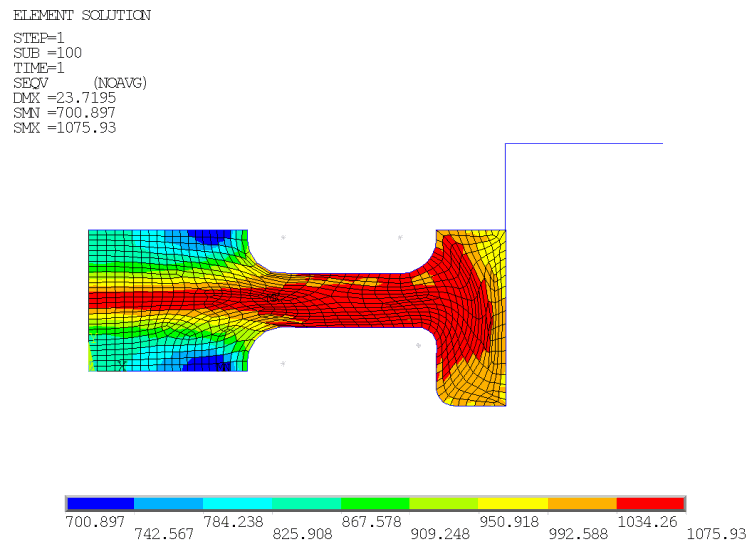At the conclusion of the ring-gear forging simulation, the cylindrical block (work piece) completelyfills the die gap. The die gap becomes very narrow as deformation progresses and rezoning becomes necessary, as there are not enough elements and nodes in the free surface to completely fill this gap as the work piece material flows.
The effective plastic strain distribution before and after the first rezoning is shown in Figure 4.2: Effective Plastic Strain and Deformed Mesh at Time of First Rezoning and Figure 4.6: Effective Plastic Strain Distribution After First Mapping, respectively.
The same contours apply before and after the second rezoning, as shown in Figure 4.3: Effective Plastic Strains and Deformed Mesh at Time of Second Rezoning and Figure 4.7: Effective Plastic Strain After Second Mapping, respectively. The effective plastic strain distribution and the similar contours both indicate that the mapping of data was achieved with accuracy.
Because the mesh changes significantly during the first rezoning, it is expected that results before and after first mapping are different (by about 0.1 percent in this case). The difference is due to the balancing of residuals that are larger when compared to the situation when mesh changes are not significant (as seen in the second rezoning).
Few new elements were added during the second rezoning; therefore the maximum effective strains are identical before and after mapping. The maximum value of effective strain is 3.53, which is close to the reference effective strain value.[1] The contours of effective strains are similar to those of the reference, with a region of very concentrated strains in the middle part where the material flows.
The von Mises stress distribution in the following figure shows that elastic deformation is extremely small compared to plastic deformation:
The tiny elastic deformation occurs because the minimum stresses are much higher than the initial yield stress of the material.
In this figure, a half 2D axisymmetric expansion is performed on the von Mises stress, which offers a better visualization of the plastic flow in this process:






